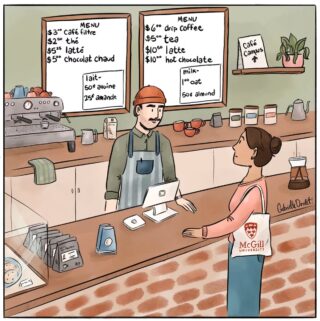Note: Ontario has postponed March break until the week of April 12, 2021.
Ontario will reopen all its elementary and secondary schools to in-person learning over the next two weeks even as concern grows about the emergence of more contagious variants of the COVID-19 virus.
Education Minister Stephen Lecce said on Wednesday that schools in all regions, except for Toronto, Peel and York, would resume in-class learning on Monday. Schools in those three remaining hard-hit areas would reopen on Feb. 16, he said.
Ontario is the only province that has kept many of its schools closed to in-person learning, and Mr. Lecce said his government was “cautiously” and “gradually” reopening buildings. Students in 18 out of 35 public-health units in the province have returned to classrooms since the December holiday break, including those in Ottawa and London, who were back on Monday.
“I want to be clear: If things change, if trends move in the wrong direction, we will not hesitate to act, following the advice of the Chief Medical Officer of Health,” Mr. Lecce said at a news conference.
There are few more polarizing issues in the pandemic than keeping schools open. There is no conclusive evidence regarding transmission in schools, and public-health officials are unsure how the arrival of new variants will affect schools.
Mr. Lecce said his government introduced new measures so students can return to the classroom. Among them, students in Grades 1 to 3 will be required to wear masks, not just those in Grades 4 and up. Several boards, including Toronto and Halton, had already mandated masks for all students in the fall.
He also said the government enhanced screening guidelines for entry into school buildings, which several boards previously had in place. Further, Mr. Lecce said there would be an expansion of testing for students and staff that would be directed by local public-health units.
Sam Hammond, president of the Elementary Teachers’ Federation of Ontario, said that while the measures will help, they are “not sufficient,” especially with the new variants spreading in Ontario. “Schools still need smaller classes, mandatory masking for kindergarten and … portable air purification units in every classroom,” Mr. Hammond said.
Some doctors and families have put pressure on the government in recent weeks to reopen schools. The province’s largest pediatric hospitals recently said in an updated guidance document that delays in reopening schools are harmful to the social, developmental and academic achievement of children.
Lawrence Loh, Medical Officer of Health for the Region of Peel, west of Toronto, said his area is seeing levels of community transmission where the benefits of having children in school outweigh the risks, given the health and safety measures put in place. The province emphasized on Wednesday that public-health units would have the authority to close schools to in-person learning based on their local circumstances.
Janine McCready, an infectious-diseases physician at Toronto’s Michael Garron Hospital, said it is difficult to know what to expect with variants circulating in the community, but to keep schools open, it is important to strictly adhere to health and safety protocols.
“If we open schools, that doesn’t mean that everything else is open,” Dr. McCready said. “We’re keeping other things closed to drive the rates down so that we can keep the schools open.”
Dr. McCready is spearheading a pilot program at Grenoble Public School in Toronto’s Flemingdon Park, a pocket of high-rises that is home to many new immigrants. Ten school staff members started the program on Wednesday where they are building expertise in infection control and protection practices to share with staff, families and students. “With COVID and what we’ve found in the hospitals and long-term care is that you can always do more,” Dr. McCready said.
Further, she and her team are looking to provide schools in the area with take-home testing kits to make testing easier for families when their children have symptoms. All families would need to do is administer a non-invasive test at home and drop off the swab at an assessment centre.
Mikki Hymus, the principal at Grenoble, said her school, which typically has roughly 1,000 students, now has only about 500 attending in-person. The rest have opted for online learning.
“When this opportunity came, we jumped on it because we want to do better. We want to see how we can improve and how we can assure our community and re-establish that trust,” she said.
CAROLINE ALPHONSO
EDUCATION REPORTER
The Globe and Mail, February 3, 2021

